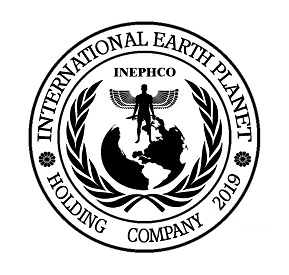
City Stock Exchange
The City Stock Exchange is an organized and self-regulated market in which securities are traded by brokers or traders in accordance with the law. The stock exchange is established and managed in the form of a public joint stock company.
The main idea of creating a stock exchange in the Country dates back to 1315. This year, a Dutch expert and a Belgian expert came to the Country to investigate and draft legal regulations, but their study was halted at the start of World War II. In 1333, the mission of establishing the stock exchange was entrusted to the Chamber of Commerce, Industries and Mines, the Central Bank and the Ministry of Commerce. This group, after 12 years of research, in 1345, prepared the law and regulations for the formation of the The City Stock Exchange. The bill to establish the The City Stock Exchange was approved by the National Assembly in May 1345. On February 6, 1967, the City Stock Exchange started operating with the entry of shares of Bank Sanat va Ma’dan and Naft Pars.
From 1346 to 1357, the number of companies and institutions listed on the The City Stock Exchange increased from 10 economic enterprises with a capital of 2.6 billion to 142 companies with more than 308 billion .
In the early post-revolutionary period of 1978, the new approach , with the aim of fighting capitalism, made efforts to close the City Stock Exchange, which failed.
The number of companies accepted from 105 companies was reduced to 56 at the end of 1988. The reason for this has been the acquisition of many businesses by the government. In 1989, within the framework of the first five-year plan for economic, social and cultural development, the stock exchange resumed its activities as a prerequisite for privatization. The first influential event on the stock exchange was the approval of the bill on the management of banks on June 8, 1979 by the Revolutionary Council.
Country BOURSE
Over-the-counter (OTC) trading takes place directly between the two parties without any oversight by one exchange. Over-the-counter trading exchanges are taking place in organized markets.
A stock exchange has advantages such as facilitating liquidity, reducing credit risk on the default of one of the parties to the transaction, transparency and availability of the current market price.
In over-the-counter market transactions, prices are not necessarily published for the general public, and because the contracts are bilateral, each party can be concerned about the credit risk of the other party.
Such as over-the-counter stock trading, financial instruments (including stocks) and their derivatives are traded. The over-the-counter derivatives market is active in assets such as interest rates, exchange rates, stocks and commodities. [1]
Products traded on the stock exchange must be well standardized. In fact, in order to create transparency, the products exchanged must be in accordance with the quantity, quality and specific objectivity defined by the stock exchange and the same in all transactions. The over-the-counter market does not have these limitations. For example, the parties may agree on an unusual amount. [2]
In 2008, about 16 percent of US stocks were traded off the stock exchange. In April 2014, that figure rose to about 40 percent. [2]
At the end of 2012, although over-the-counter futures fell 3.3 percent year-on-year, the volume of overdue transactions was $ 346.4 trillion. [3] It was estimated at $ 693 trillion by the end of June 2013.
The gross market value of over-the-counter derivatives, which is the cost of replacing all existing contracts at current market prices, fell from $ 25 trillion in late 2012 to $ 20 trillion by the end of 2013.
Country Energy Exchange
Country Energy Exchange is one of the markets of the Country Stock Exchange, which is the fourth official stock exchange in the country and under the supervision of the Stock Exchange and Securities Organization in 2012, with the permission of the Supreme Council of the Stock Exchange and Securities. Was established [3]. Following the failure of the the Country Oil Exchange and the need to create a new trading market in the electricity industry to prevent the multiplicity of markets in the energy sector by merging the Country Oil Exchange with the newly established Electricity Exchange, Country Energy Exchange Company as the fourth pillar of the capital market in 1391 Took.
The CEO of the company is currently Seyed Ali Hosseini, who in his resume has also experienced the presence of the Oil Products Refining and Distribution Company affiliated with the Ministry of Oil of Country .
Seyed Ali Hosseini in the Stock Exchange and Securities Organization, Ali Salehabadi’s deputy in the important and sensitive part of the Securities Publishers Supervision Department, as well as the board of directors of this institution supervised the Country capital market.
During Hosseini’s presence, the Country’s Energy Exchange for the first time in the the Country oil industry was able to host large volumes of Country gasoline and diesel in 1398 to global markets. Also after years of waiting for Country’s first light crude oil transaction in the export ring of this exchange With the presence of three buyers, it was realized in 1397.
The Country Energy Exchange Company (Public Joint Stock Company) was registered in the National Registration Office of City with the national identity card 10320798438 during the number 428002 dated 4/17/1391 and subsequently started operating on 12/19/2012.
According to the minutes of the Extraordinary General Assembly of 1/4/2014, the name of the company has been changed to Country Energy Exchange Company and it has been entered in the OTC market of Country on 10/26/2012.